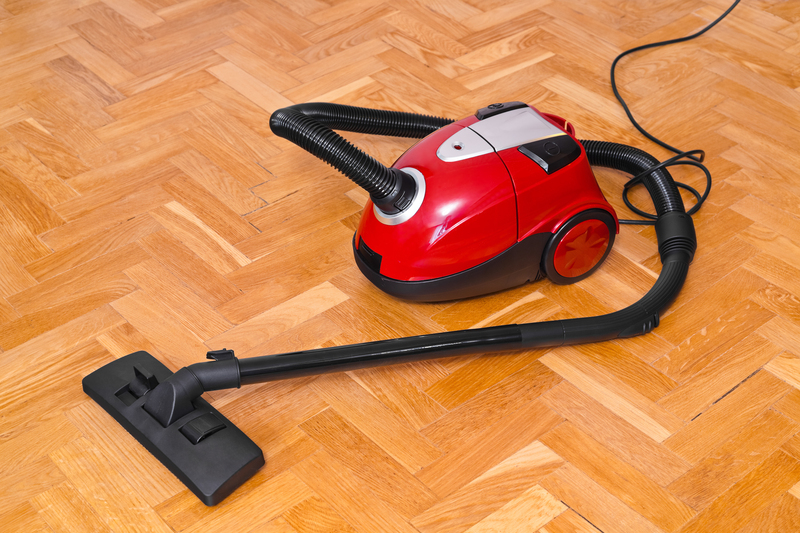Deep Clean for Carpet and Floors
Posted on 14/06/2025
Ultimate Guide to Deep Clean for Carpet and Floors
Maintaining clean carpets and spotless floors is essential for a healthy and inviting home. Whether you're tackling stubborn stains, banishing allergens, or simply striving to enhance your living environment, knowing how to deep clean your carpet and floors can make all the difference. In this comprehensive guide, we'll explore the best methods, techniques, and tips for a deep clean for carpet and floors, ensuring your surfaces look--and feel--as good as new.

Why a Deep Clean for Carpet and Floors Matters
Routine cleaning like sweeping and vacuuming is crucial, but it often leaves behind dirt, bacteria, and allergens embedded deep within carpets and on various floor surfaces. Deep cleaning carpets and floors periodically improves your home's air quality, extends the life of your flooring, and creates a fresher living space for everyone.
- Health benefits: Reduces allergens, bacteria, and dust mites
- Visual appeal: Removes stains, restores color, and improves shine
- Improved durability: Prevents wear and tear from embedded dirt
Preparing for Deep Cleaning Carpets and Floors
Gather Essential Supplies
Before diving in, you'll need some essential items for a thorough deep clean of your carpets and floors:
- Vacuum cleaner (preferably with HEPA filter)
- Broom and dustpan
- Mop or steam mop
- Bucket
- High-quality carpet shampoo
- All-purpose floor cleaner suitable for your type of flooring
- Scrub brushes or sponges
- Microfiber cloths
- Baking soda and vinegar (optional for natural cleaning)
- Protective gloves
Declutter and Move Furniture
Begin by removing as much furniture as possible from the area you want to deep clean. Decluttering helps ensure you reach every spot, leaving no section untouched. For large items that can't be moved, place aluminum foil or plastic pads under the legs to protect them from moisture during cleaning.
Deep Cleaning Your Carpets
Step 1: Vacuum Thoroughly
Start with a detailed vacuuming session. Move slowly across your carpets, making several passes over each section. Focus on corners, edges, and under furniture where dust and debris accumulate. Use attachments to clean stairs, crevices, and around baseboards. This step removes loose dirt and preps your carpet for a deeper clean.
Step 2: Treat Stains and Spots
Identify any stains--whether from spills, pets, or foot traffic--and treat them before deep cleaning. Here's how:
- Blot, don't rub: Use a clean, damp cloth to blot stains gently to prevent spreading.
- Apply a carpet stain remover: Choose a product suitable for your carpet's material and follow the manufacturer's directions.
- Natural solution: Mix one part vinegar with two parts water, add a dash of baking soda, and spray onto the stain. Let it sit for several minutes, then blot dry.
Step 3: Deep Clean with Carpet Shampooer or Steam Cleaner
For a truly deep carpet clean, use a carpet shampooer or steam cleaner. These machines inject cleaning solution deep into carpet fibers and then extract dirt and moisture.
- Follow the instructions: Always use the proper dilution and cleaning technique based on your machine's guidelines.
- Work in sections: Move methodically across the room to ensure thorough cleaning.
- Allow for drying time: Open windows, use fans, or run a dehumidifier to speed up drying and prevent mold or mildew growth.
Step 4: Deodorize (Optional)
For extra freshness, sprinkle baking soda liberally over carpets after cleaning. Let it sit for 15-30 minutes, then vacuum it up for odor absorption and a boost in cleanliness.
Deep Cleaning Different Types of Floors
Different flooring materials require specific care during a deep clean for floors. Here's how to approach hardwood, tile, laminate, vinyl, and stone floors.
Hardwood Floors
- Dust or vacuum first: Use a soft-bristle broom or vacuum with a floor-brush attachment to remove dirt and debris.
- Spot clean: Wipe up spills immediately with a damp microfiber cloth to avoid water damage.
- Damp mop with gentle solution: Mix a few drops of pH-neutral wood floor cleaner with warm water, dampen your mop (do not soak), and clean in the direction of the wood grain.
- Polish (optional): For extra shine, use a polish designed for hardwood once or twice a year.
Laminate Floors
- Vacuum or sweep: Remove loose dirt with a vacuum or broom.
- Use minimal water: Damp mop with a laminate floor cleaner or a solution of water and a splash of vinegar. Avoid excess moisture, which can cause warping.
- Buff with dry cloth: After mopping, use a microfiber cloth to dry and buff the floor for a streak-free shine.
Tile and Grout
- Sweep and vacuum: Pick up dirt, dust, and debris.
- Use a heavy-duty cleaner or steam: Mops or scrubbing brushes with a tile and grout cleaner will help lift stains. Steam cleaning is also highly effective for grout lines.
- Rinse thoroughly: Wipe away all cleaner residues with a clean damp cloth.
- Seal grout (optional): Consider applying a grout sealer every year to prevent staining and make routine cleaning easier.
Vinyl Flooring
- Initial cleaning: Sweep or vacuum to remove surface dirt.
- Mop with gentle detergent: Use a soft mop and a vinyl-appropriate cleaner. Avoid abrasive scrubbing pads that could scratch the surface.
- Dry immediately: Vinyl is water-resistant, but standing water can damage the subflooring.
Natural Stone Floors
- Use pH-neutral cleaner: Acidic or alkaline cleaners can damage stone surfaces.
- Mop with care: Use a damp (not wet) mop and regularly change your mop water to avoid re-depositing dirt.
- Seal stone: Some types of stone like marble and granite require regular sealing to maintain their luster and prevent stains.
DIY Deep Cleaning Solutions for Carpet and Floors
If you prefer eco-friendly or budget-friendly products, consider these do-it-yourself (DIY) deep cleaning solutions that work effectively on many types of flooring and carpets:
- Baking Soda and Vinegar: Great for deodorizing and general stain removal (best for tile and grout).
- Lemon Juice: Natural bleaching agent for tough stains on light-colored surfaces (avoid on stone or wood).
- Castile Soap and Water: Gentle cleanser perfect for wooden and laminate floors.
- Rubbing Alcohol Solution: Mix one part alcohol to three parts water for quick-drying cleaning power, leaving floors streak-free.
Professional vs. DIY Deep Carpet and Floor Cleaning
Should you hire a professional or do it yourself? Both methods have unique advantages:
- DIY Cleaning: Cost-effective and suitable for regular maintenance, minor stains, and small areas.
- Professional Cleaning: Deeper extraction, commercial-grade solutions, and experience dealing with stubborn stains and large areas.
For high-traffic sections, pet messes, severe stains, and annual deep cleaning, consider hiring professionals. Otherwise, doing it yourself is manageable for most surfaces with the right tools and products.
Tips for Maintaining Clean Carpets and Floors Year-Round
- Vacuum at least once a week--more often for homes with pets or allergies.
- Wipe or mop spills immediately to prevent staining and water damage.
- Use area rugs and doormats to minimize dirt tracked into the house.
- Rotate furniture periodically to avoid uneven wear.
- Follow manufacturer's care instructions for specialty floors and carpets.
- Deep clean carpets and floors every 6-12 months for the best results.

Frequently Asked Questions
How Often Should I Deep Clean My Carpet?
For most households, deep cleaning carpets every 6-12 months is recommended. Homes with pets, kids, or allergy sufferers may need more frequent deep cleans.
What Is the Best Deep Cleaning Method for Carpets?
Hot water extraction (steam cleaning) is widely considered the most effective method for deep cleaning carpets, as it removes dirt and allergens deep in the fibers. For natural fiber or specialty carpets, consult manufacturer guidelines.
Will Deep Cleaning Floors Damage My Flooring?
When using appropriate cleaners and techniques for your specific flooring type, deep cleaning will not cause damage. Avoid oversaturating wood and laminate, and steer clear of abrasive materials on delicate surfaces.
Can I Use Vinegar on All Floors?
Vinegar is excellent for tile and linoleum but can dull or damage stone and hardwood. Always test in a small area first and follow specific manufacturer recommendations.
Conclusion: Enjoy the Benefits of Deep Clean Carpet and Floors
A thorough deep clean for carpet and floors can transform your living space--making it healthier, brighter, and more pleasant. By investing time in periodic deep cleaning, using the right products, and maintaining your floors routinely, you'll extend their lifespan and maximize comfort for you and your family. Commit to regular deep cleaning and enjoy a home that always feels fresh and inviting.
Ready to experience the difference? Start your deep carpet and floor cleaning journey today, and witness the impressive transformation for yourself!




